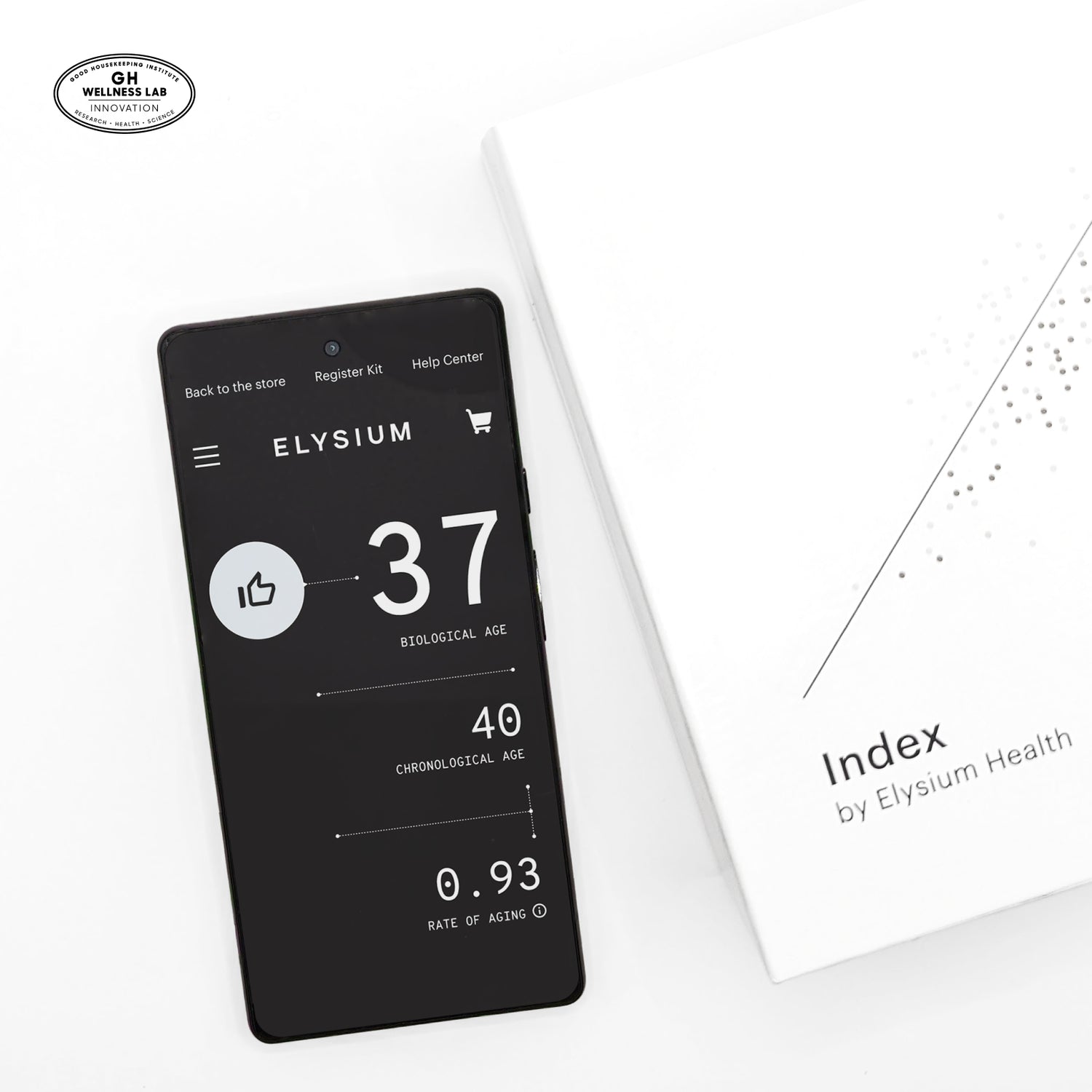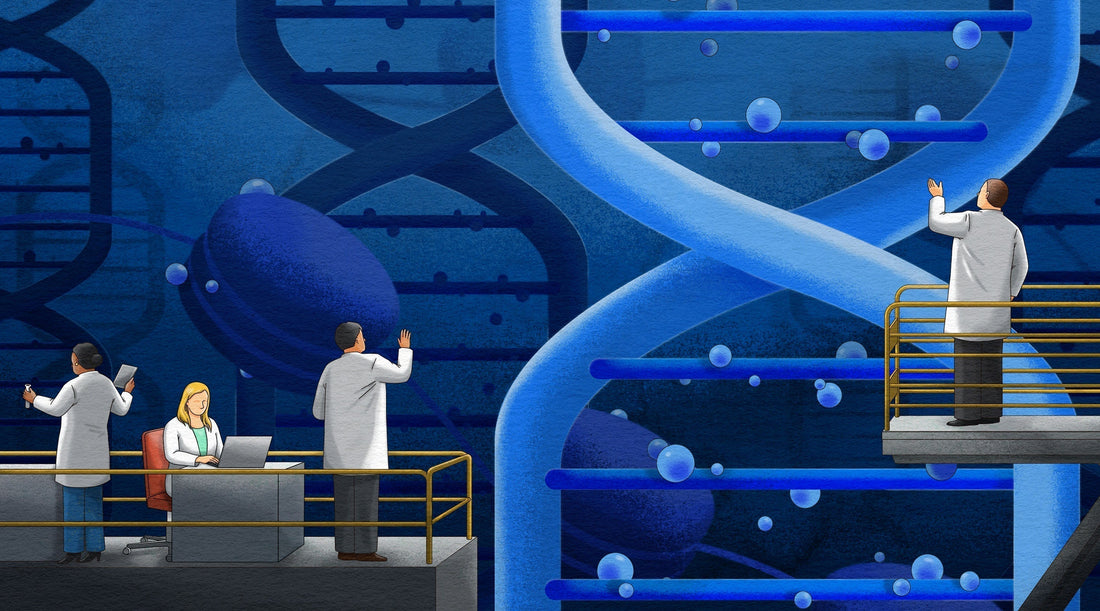Our DNA makes us who we are, but it’s epigenetics that brings our story to life. Here’s the science of epigenetics, including how it works and how it relates to biological clocks.
Key Takeaways:
- Epigenetic mechanisms, including DNA methylation, histone modification, and non-coding RNA, regulate gene expression. DNA methylation has proven to be a valuable biomarker of aging.
- Part of a person's epigenetics is inherited from their parents, while others are attributed to their lifestyle and environmental factors.
- "Epigenetic clocks" are algorithms that look at many DNA methylation sites and produce accurate predictions about aging.
Related Product:
Index: A next-generation, DNA methylation-based biological age test. Measures 10 different aspects of aging, including nine system ages from a simple saliva sample.
Have you ever thought of writing a memoir? Well, you may be interested to know that while you’re living, a memoir of sorts is already being written—by you. Or by your epigenome, to be specific. The first part of this story was composed at the point of conception, when your genome was created: the general instructions for making you who you are. The epigenome is another layer of this story, the ongoing narrative not yet written at birth, or what some scientists call “the biological embedding of experience.” It’s a story written by experience and read using advanced technology and algorithms, revealing many interesting aspects of your health—including your biological age.
What is epigenetics?
Let’s start with a reminder about genetics: It’s the study of genes, the basic units of inheritance passed down from your parents. Genes are particular sequences of DNA, many of which are used to create proteins, each of which, in turn, perform a particular function in your body. The epi in epigenetics comes from the root Latin word meaning above, so epigenetics is sometimes described as “above” or “in addition” to genetics. In practice, the term has become shorthand for changes in organisms caused by the modification of gene expression (or activity) rather than the alteration of the underlying genetic code itself. If genes represent the written list of ingredients in a recipe, epigenetics describes how much of each ingredient to use.
Among scientists, the definition gets a bit more particular as they distinguish other ways of regulating gene expression from epigenetics. One broad definition from the NIH Epigenomics Roadmap Project specifies that epigenetics includes “both heritable changes in gene activity and expression (in the progeny of cells or of individuals) and also stable, long-term alterations in the transcriptional potential of a cell that are not necessarily heritable.” In other words, part of your epigenetics was inherited from your parents, whereas others can be attributed to your lifestyle and environmental factors.
What does epigenetics have to do with gene expression?
When we talk about gene expression, what we mean is how your genes are actually used. In the broadest view, it’s the process in which the genetic code becomes the person you are—the genotype becoming the phenotype. Gene expression can include turning genes on and off or somewhere in between, controlling when proteins are made and in what amount. Gene expression is regulated by a number of factors, including epigenetic mechanisms. These are the most common (and most studied) types of epigenetic mechanisms:
DNA methylation: A chemical marker is added to the DNA, usually signaling that the gene is in the “off” position, but not always. The modification is reversible: Demethylation erases the chemical marker.
Histone modification: DNA is wrapped around proteins called histones, which can be loosely wrapped and accessible to being read—turned on, or tightly wrapped and unavailable to being read—turned off.
Non-coding RNA: Non-coding RNA is RNA that is transcribed from DNA but not translated into proteins. Instead, it plays a number of roles in modifying gene expression.
What is DNA methylation?
DNA consists of a double strand of four different main nucleotides: cytosine, adenine, guanine, and thymine. When methylation occurs, a small chemical group called a methyl group is added at a particular location along the strand of DNA. In humans, this mostly occurs where a cytosine nucleotide is found next to a guanine nucleotide; this is called a CpG site. Often methylation means that a gene is shut down, but methylation can actually increase or decrease the expression of the gene, depending on its location.
DNA methylation is a part of normal cell function. In development, cells (which all contain the same DNA) have particular genes turned on related to their function and other genes turn off which are unrelated to their function—creating the difference between a nerve cell and a muscle cell, for example. Likewise, patterns of DNA methylation tend to change predictably with a person’s age. Beyond normal development, DNA methylation is also a part of what scientists call the biological embedding of experience, when our life experiences are recorded in our epigenome and influence our gene expression. To take a concrete example, exposure to cigarette smoke influences DNA methylation, in particular at the AHRR gene. Nutrition, stress, physical activity, sleep, alcohol consumption, and other factors can all influence DNA methylation.
DNA methylation and biological age clocks
DNA methylation is the most studied of the epigenetic modifications, in part because it has proven to be a new and very useful biomarker. A biomarker, or biological marker, is any measurable indicator of a normal or abnormal process happening in the body—usually found in blood, saliva, tissues, and elsewhere. DNA methylation is a type of epigenetic biomarker that works by zooming in on those CpG sites we mentioned earlier to better understand aspects of your health. DNA methylation has proven especially useful at creating “epigenetic clocks,” or algorithms that can look at lots of methylation sites and produce accurate predictions about aging.
Geneticist and biostatistician Steve Horvath created the first of these epigenetic clocks that could predict chronological age—the number of years you’ve been alive—by looking at DNA methylation. One of his early clocks looked at 353 CpGs and was able to predict human age throughout life, from embryo to old age. Later clocks were developed by other scientists, most notably Yale researcher, Morgan Levine. Her DNAm PhenoAge clock was designed to predict biological age: a measure of the average age at which your body is expected to function, a number that tells you if you’re aging slower or faster than your chronological age.
We worked with Levine to develop Index by Elysium Health, which builds on her previous work to create the most precise epigenetic biological age test available. Index works by measuring DNA methylation at more than 100,000 sites across your genome to determine your biological age and rate of aging. The results produced by Index correspond closely with measures of physical fitness and are a more accurate predictor of biological age than DNAm PhenoAge. Whereas other clocks typically produce variations between technical replicates from three to nine years, Index shows agreement across replicates within zero to 1.5 years. In addition to being more precise, Index also allows a much simpler and non-invasive workflow—requiring only a saliva sample, rather than blood. Also unique to Index are system age scores which are biological ages for individual systems, including the brain, heart, liver, and metabolic. Index provides an unprecedented level of insight into how you’ve been aging with nine system ages, overall biological age, and cumulative rate of aging.
What’s the use of epigenetic clocks?
For researchers, epigenetic clocks and epigenetic data more broadly represent an opportunity to understand human health and aging in more detail than ever, opening the door for new interventions and personalized medicine. For people who don’t work in the lab but want to leverage the most advanced technology available to understand more about their health, epigenetic clocks like Index are valuable because they offer us a precise snapshot of how we’re aging. With those results in hand we can all make science-backed adjustments to multiple aspects of our lives—what we eat, how we exercise, sleep habits, meditation rituals, even experiments with fasting—that may maintain or improve our biological age and rate of aging.
Get Elysium news, subscriber-only product offers, and a monthly digest of new research in the field of aging. Sign up for our newsletter.




